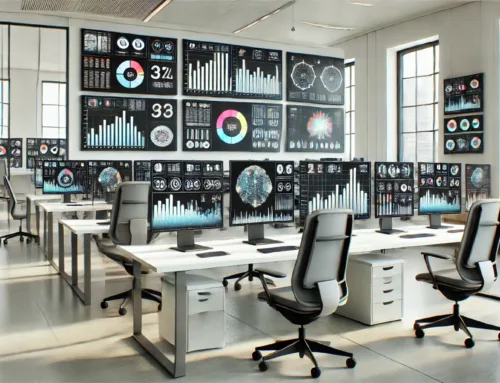When it comes to outsourcing to a data visualization agency, the initial step is crucial in ensuring the success of your project. By understanding the key components of a fruitful partnership, you can navigate the process with confidence and clarity. From defining project requirements to setting a realistic budget, each stage plays a vital role in the outcome of your collaboration. Stay tuned to discover how these steps can pave the way for a seamless experience with your chosen agency.
Identify Project Requirements
To effectively outsource to a data visualization agency, the first crucial step is to accurately identify your project requirements. Begin by clearly defining your data analysis needs and the specific goals you aim to achieve through visualization techniques. Consider the type of data you will be working with, the level of complexity involved, and the desired outcomes of the visualization process.
When outlining your project requirements, articulate the key metrics and variables that need to be analyzed to extract meaningful insights. This will help the data visualization agency understand the scope of work involved and tailor their visualization techniques accordingly. Be precise in detailing any specific preferences or constraints you have regarding the visual representation of data.
Research Potential Outsourcing Partners
When researching potential outsourcing partners for your data visualization project, start by compiling a list of agencies that specialize in the specific visualization techniques and data analysis skills required for your project. To narrow down your options, compare portfolios of different agencies to assess the quality and style of their previous work. Look for examples that align with the type of visualizations you aim to create, ensuring they have experience in handling similar projects successfully.
Additionally, checking reviews from past clients can provide valuable insights into the agency’s reliability, communication, and overall satisfaction levels. Pay attention to comments related to meeting deadlines, responsiveness to feedback, and the ability to deliver results that meet or exceed expectations. Positive reviews can be a good indicator of a reliable and professional partner for your data visualization needs.
Evaluate Agency Expertise
After compiling a list of potential outsourcing partners and reviewing their portfolios to align with your project’s requirements, the next step is to evaluate the expertise of each agency. Conduct a skills assessment to ensure the agency possesses the necessary technical proficiency and creativity to bring your data visualization project to life. Look for agencies with a track record of delivering high-quality work that meets or exceeds client expectations.
One effective way to evaluate agency expertise is by reviewing their case studies. Case studies provide insight into the agency’s approach to projects, problem-solving skills, and the results they have achieved for clients. Analyzing these case studies can help you gauge the agency’s ability to handle the complexities of your data visualization project and deliver impactful visual solutions.
Discuss Project Details
Initiate the process of discussing the project details with the selected data visualization agency to align on key objectives, timelines, and deliverables. Clearly define the project scope, including the specific data analysis requirements and design concepts you wish to incorporate. Engage in a comprehensive dialogue regarding the data visualization techniques the agency plans to utilize to bring your vision to life. Communicate your expectations in terms of the complexity of the visualizations, interactive elements, and the overall aesthetic appeal you desire.
During these discussions, ensure that the agency understands the importance of accurately representing the data while also creating visually engaging outputs. Request samples of their previous work that showcase their expertise in handling similar projects. Establish a timeline that aligns with your project milestones and deadlines, making sure that the agency can commit to these timeframes. Clarify the deliverables you expect at each stage of the project to maintain transparency and avoid misunderstandings. By delving into these project details, you set a solid foundation for a successful collaboration.
Set a Budget
Moving forward in your collaboration with the data visualization agency, the next strategic step involves establishing a clear and realistic budget. When setting a budget for outsourcing data visualization, cost considerations and financial planning are essential. Begin by determining the scope of the project and the specific requirements you have. Consider factors such as the complexity of the data, the level of interactivity needed, and any special features that are crucial for your project.
Once you have a clear understanding of your project needs, you can proceed with budget allocation. This involves breaking down the costs associated with data visualization services, including design, development, and any additional support required. It’s crucial to set aside a contingency fund for unexpected expenses or scope changes to ensure smooth project execution.
Expenditure control is key to managing your budget effectively. Regularly monitor expenses against the allocated budget and make adjustments as needed to stay on track. By setting a well-defined budget, you can ensure a successful collaboration with the data visualization agency while maintaining financial stability throughout the project.
Frequently Asked Questions
How Do Data Visualization Agencies Ensure Data Security?
To ensure data security, data visualization agencies utilize data encryption, secure servers, confidentiality agreements, and access control measures. By implementing these safeguards, agencies protect sensitive information and maintain the integrity and confidentiality of data.
Can We Request Changes After the Project Delivery?
So, you want to make tweaks post-project delivery? Absolutely! Most agencies offer revision processes based on client feedback. Just ensure it’s within the agreed scope; additional changes might incur extra fees.
Do Agencies Offer Post-Project Support or Maintenance?
Yes, agencies often provide ongoing assistance and customer service post-project. This support may include post-launch updates, troubleshooting, and maintenance. It ensures your data visualizations continue to perform optimally and meet your evolving needs.
What Software/Tools Do Agencies Use for Data Visualization?
When creating data visualizations, agencies commonly use tools like Tableau, Power BI, and D3.js. Best practices involve choosing the right tool for the data type, audience, and interactivity level. This ensures effective communication and engagement.
How Do Agencies Handle Revisions or Iterations During the Project?
During the collaboration process, agencies establish a feedback loop for revisions. This iterative approach ensures project timelines are met. Client involvement is key, with agencies providing regular updates and seeking input to refine visualizations effectively.




